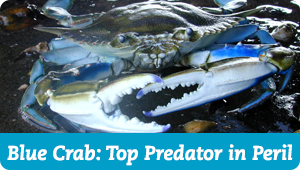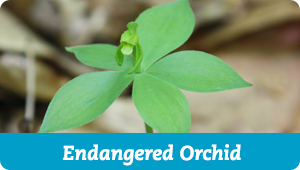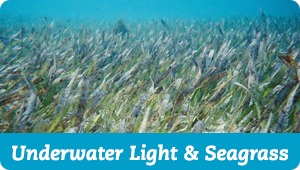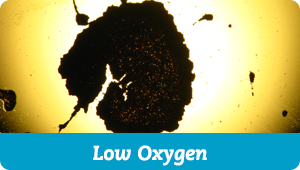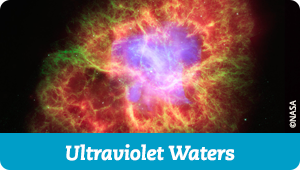Roughly 1 million species are threatened with extinction around the world. They are falling victim to habitat loss, poaching, pollution, or the entrance of a competitor or disease. Absolute extinction is the final stage in a species’ demise. But there is a second kind of extinction—functional extinction—that can occur earlier. Functional extinction takes place when a species’ numbers have dropped so low, they can no longer impact the ecosystems where they live. Any benefits they gave to other creatures, including humans, effectively vanish.
The benefits nature gives to society are called ecosystem services. The species in the videos on this page all help us in some way. For some species, their worth is obvious. Blue crabs provide food for millions across the country. Super-filtering oysters cleanse the water of bacteria and nutrient runoff, and both oysters and seagrasses provide habitat to smaller animals like shrimp and baby crabs. For others, their value is more subtle. A tiny five-leaf orchid does little to sustain life directly. But their fragility makes them canaries in a coal mine: The disappearance of a forest’s orchids is often the first sign of a larger problem.
These benefits are now in jeopardy. The once-plentiful eastern oyster is already on the brink of functional extinction in the Chesapeake. When John Smith entered the Bay in 1608, oysters “lay as thick as stones.” Today they have plunged to less than 1 percent of their historic levels. Underwater seagrasses are going the same route. Meanwhile on land, Isotria medeoloides has earned the dubious distinction of “rarest orchid east of the Mississippi.”
Once a species becomes threatened or endangered, it can be difficult to bring it back from the edge. Success stories like the bald eagle, and the tentative recovery of blue crabs, have proven that it can be done. But it’s often a long and arduous road. The best defense against extinction is to keep species out of danger entirely. That task becomes much easier once we realize humanity and nature aren’t necessarily at odds—in the end, Mother Nature’s interests align with ours more often than we know.

